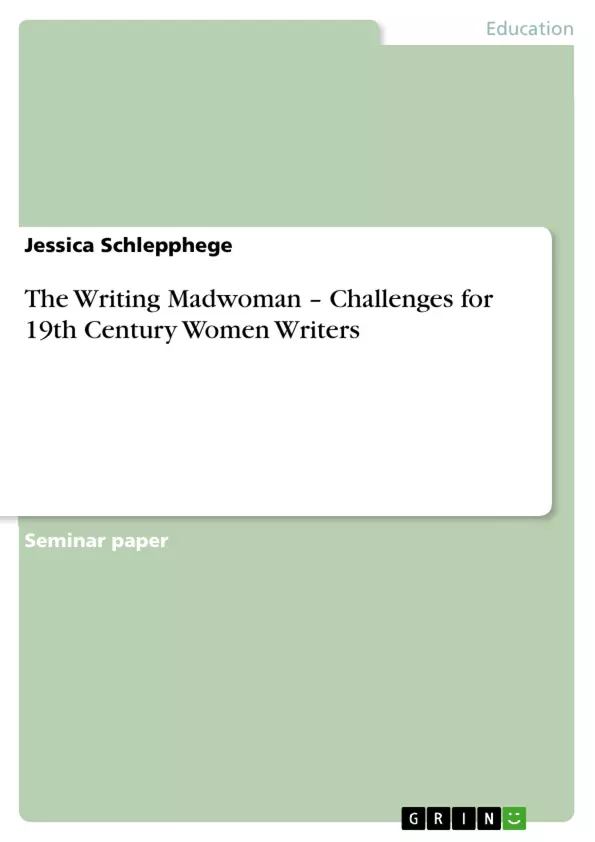1. INTRODUCTION
“Like the minority writer, the female writer exists within an inescapable condition of identity which distances her from the mainstream of the culture and forces her either to stress her separation from the masculine literary tradition or to pursue her resemblance to it”.
Lynn Sukenick (In: Miller 1985, 356)
Could madness have been a means of ‘liberation’ for 19th century female writers? Goodman et al (1996, 110) raise this legitimate question while leaving open the question of whether or not the writer herself is considered mad or if she is writing about madness. No matter which approach one chooses, the question remains why women of this century should apply such drastic methods at all. Why would madness be considered a means of liberation for female writers?
In this paper I will explore the reasons why 19th century women may more likely have become mad than men in the same time period. I will discuss the issue of mad female writers as well as the appearance of madness in their texts, and finally focus on strategies that female writers applied in order to be heard (or read) in a male dominated literary environment.
Inhaltsverzeichnis (Table of Contents)
- 1. INTRODUCTION
- 2. GENERAL FEMALE MADNESS DURING THE 19th CENTURY
- 3. Madness and Female Writers
- 3.1 Madness of the Female Writer
Zielsetzung und Themenschwerpunkte (Objectives and Key Themes)
This paper aims to explore the reasons why 19th century women may have been more likely to experience madness than men during the same period. It examines the issue of mad female writers and the appearance of madness in their texts, focusing on strategies they employed to be heard in a male-dominated literary environment.
- The prevalence and causes of female madness in 19th century England
- The relationship between madness and female writers
- Strategies employed by female writers to navigate a male-dominated literary environment
- The role of social and cultural expectations in shaping women's experiences of madness
- The impact of gender and power imbalances on the perception of female madness
Zusammenfassung der Kapitel (Chapter Summaries)
Chapter 1 introduces the concept of the "writing madwoman" and its relevance to 19th century women writers. It raises questions about the potential liberating aspects of madness and explores the reasons why this concept may be applicable to women of this era.
Chapter 2 examines the prevalence of female madness during the 19th century, focusing on the role of social expectations and medical beliefs in shaping this phenomenon. It explores the concept of "moral insanity" and the perceived link between menstruation and madness.
Chapter 3 delves into the connection between madness and female writers, exploring the societal and literary factors that contributed to this association. It examines the work of Joanna Russ and her theories on how patriarchal societies suppress women's writing.
Schlüsselwörter (Keywords)
The primary keywords and focus topics of this text include: female madness, 19th century literature, women writers, gender and power, patriarchal society, suppression of women's writing, social expectations, medical beliefs, and literary strategies.
- Citar trabajo
- Jessica Schlepphege (Autor), 2009, The Writing Madwoman – Challenges for 19th Century Women Writers , Múnich, GRIN Verlag, https://www.grin.com/document/144589



